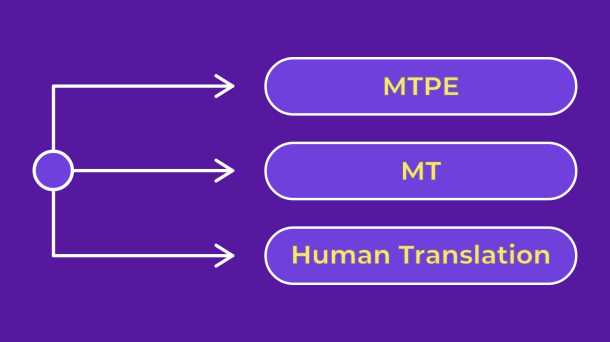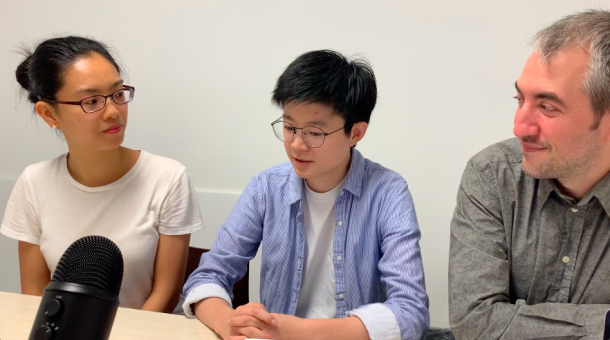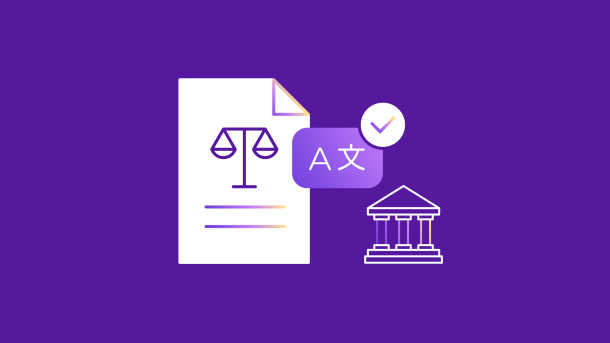Machine translation has come a long way since BabelFish released the first publicly available online machine translation software in 1995. Since then, machine translation (often abbreviated to MT) has been one of the fastest, cheapest ways to translate one language to another.
Today, MT software like Google Translate supports over 100 languages, delivering results instantaneously.
But MT isn’t perfect. There’s no substitute for the nuances that a trained human translator can bring to a project, especially a translator that understands your product, services, and audience.
That’s why at Smartling, we offer machine translation post-editing services—a hybrid approach that gives you the best of both worlds.
What is machine translation post-editing (MTPE)?
Machine translation post-editing (MTPE) combines the accuracy of human translation with the speed of machine translation. At Smartling, that means professional editors review machine-translated content and translation memory matches to ensure high-quality work.
The entire process looks like this:
- Software translates source text into the target language.
- Smartling’s algorithm automatically proofreads for any spelling or grammar errors.
- Professional translators then review the translated text, editing as needed to ensure consistency in voice, tone, and accuracy.
Machine translation may not be a substitute for humans just yet, but it can be a significant first step for companies beginning their localization efforts or expanding into new markets. Suppose you’re looking to ship software or web pages quickly or only need one or two languages. In that case, MT can be a great choice, especially if you add post-editing into the mix for an extra layer of quality assurance.
MT vs. MTPE
Machine translation offers one of the fastest and cost-effective ways to translate different language pairs. Most tools deliver results in minutes or seconds, automatically. It’s also consistent—since it won’t consider the context of a given piece of content, it will deliver the same result every time.
This makes MT an excellent choice for phrases you use throughout your website or for content that doesn’t require a strong personality in writing, like technical documentation. It’s also an excellent tool for secondary translation efforts like re-translation (editing one or two words, rather than submitting an entire paragraph) or pre-translation (getting a sense of how text expansion will impact your UX).
Machine translation post-editing supplements advantages by adding QA done by a human.
MTPE typically takes two forms, depending on your needs: full post-editing (FPE) or light post-editing (LPE). LPE sweeps the document for any glaring errors, like spelling mistakes or incorrect words. This gives you a faster turnaround but isn’t the same depth as FPE, a thorough, detailed edit for style, brand voice, and consistency. Your choice of FPE or LPE depends on the quality of the initial MT output and your use case.
MT vs. human translation
If post-editing machine translation is so helpful, why use professional translators in the first place?
While it’s true that post-editing can ensure your translations are accurate, it’s not a replacement for human translation. That’s because a professional linguist creates a final product that feels like it was written in your target language with your specific local audience in mind. This isn’t something a piece of software can capture.
The best way to ensure high-quality translations that appeal to your target markets is to hire professional translators. Professional translators — often native speakers — offer cultural experience and awareness that helps deliver better translations. They are also real humans you can ask questions to throughout your localization workflow, and they specialize in niche languages, content types, or skills like international SEO.
The more complex, detailed, or sensitive your content is, the more likely you’ll need professional translators. For that reason, Smartling works with a network of translators around the world who specialize not only in making sure your translations are accurate but that they align with your messaging and sound like it was written in the original language.
5 machine translation post-editing best practices
If MTPE sounds like a good fit for you, here’s what you need to keep in mind:
1. Make sure your source text is as clean as possible
It’s easy to complain about MT accuracy, but often the culprit isn’t the software; it’s the original text! So make sure your source text is as accurate and error-free as possible. If you have an awkward sentence or misplaced comma, it will show up in the translated version.
This is especially important for more specialized industries like finance or medicine or more elaborate content types like transcription and subtitling.
2. Choose the right TMS for your needs
There are plenty of machine translation engines out there, including Google Translate, DeepL, and Microsoft Translator. But what you want is a translation management software (TMS) like Smartling that can manage the entire localization process in one interface — whether you’re ordering machine translation or MTPE or need a more personalized approach.
Smartling’s translation management system is a repository for your content and a powerful administrative suite to control everything related to localization:
- See real-time translation progress for your websites, mobile apps, emails, and more in a single snapshot.
- Configure Smartling to automatically submit content for translation based on predetermined conditions, like your budget, workflow requirements, and timeline.
- Program dozens of quality check options to achieve consistent translations across your content without checking everything yourself.
The right TMS will also include CAT tools to help your post-editing efforts, like translation memory, glossary, and style guides for your entire translation team.
3. Set clear editorial guidelines
Any time you have a team of people editing your content, you need to have one place to find all the information they need. Document everything from your brand’s style (do you use the Oxford comma?) to paragraph length, preferred tone, brand voice, and formality.
That’s because what may be appropriate for your source language doesn’t work for your target text language. Think of brands that like to use humor, like Netflix or Taco Bell. They have to carefully calibrate how it will translate (or not) in other languages because what’s hilarious in English may fall flat in another language — or worse, offend their audience.
Building a collaborative post-editing process where you work directly with your post-editor sets you up for success (and makes it easier down the line when you’re ready to hire professional translation services).
At Smartling, you’ll get to know your translators via messaging tools like Slack — not only so you can provide feedback more efficiently but also so they get to know your brand and messaging. The more familiar they are with your products and services, the better off your edits will be.
4. Perfect is the enemy of good
The goal of MTPE is to deliver fast, accurate translations on tight turnaround times — emphasis on fast.
That means automating manual labor as much as possible. Language data network TAUS emphasizes that MTPE should be for a “good enough” approach, which they define as “comprehensible (i.e., you can understand the main content of the message) and accurate (i.e., it communicates the same meaning as the source text).”
In addition to building editorial guidelines, set expectations around what types of errors to edit and how much editors and translators need to touch. TAUS recommends aiming for semantically correct translations first and foremost and removing any culturally offensive errors, but to use the raw machine translation output as much as possible and to avoid implementing edits for style or sentence flow.
5. Continuously evaluate performance
As you continue to use MTPE, be sure to evaluate your performance. That includes measuring MT quality by assessing how much editing your team does for each project and the overall performance for your pages, including engagement and lead generation.
That’s why Smartling includes a Quality Confidence Score™ for all of our translation projects. This provides a real-time view of translation quality across your projects, languages, and translation providers, giving you a prioritized set of actions that will have the most meaningful impact on improving translation quality.
MTPE made easy with Smartling
All-in-one localization services like Smartling give you one comprehensive solution for all of your translation needs, with the flexibility to include human translation, machine translation, post-editing, or both. Our white-glove project management and automation make localization easy.
Try Smartling today - https://www.smartling.com/translation-services/sls






